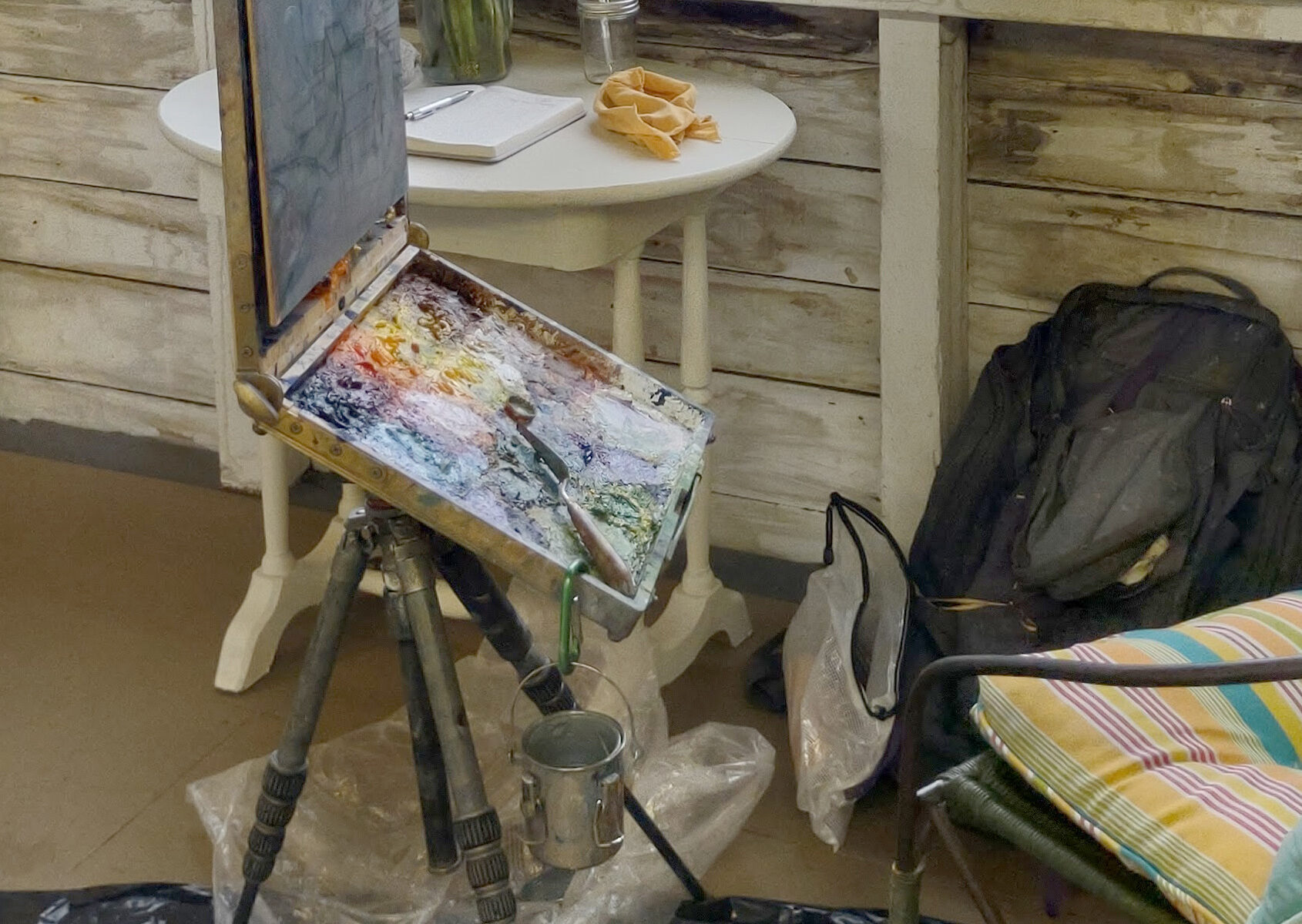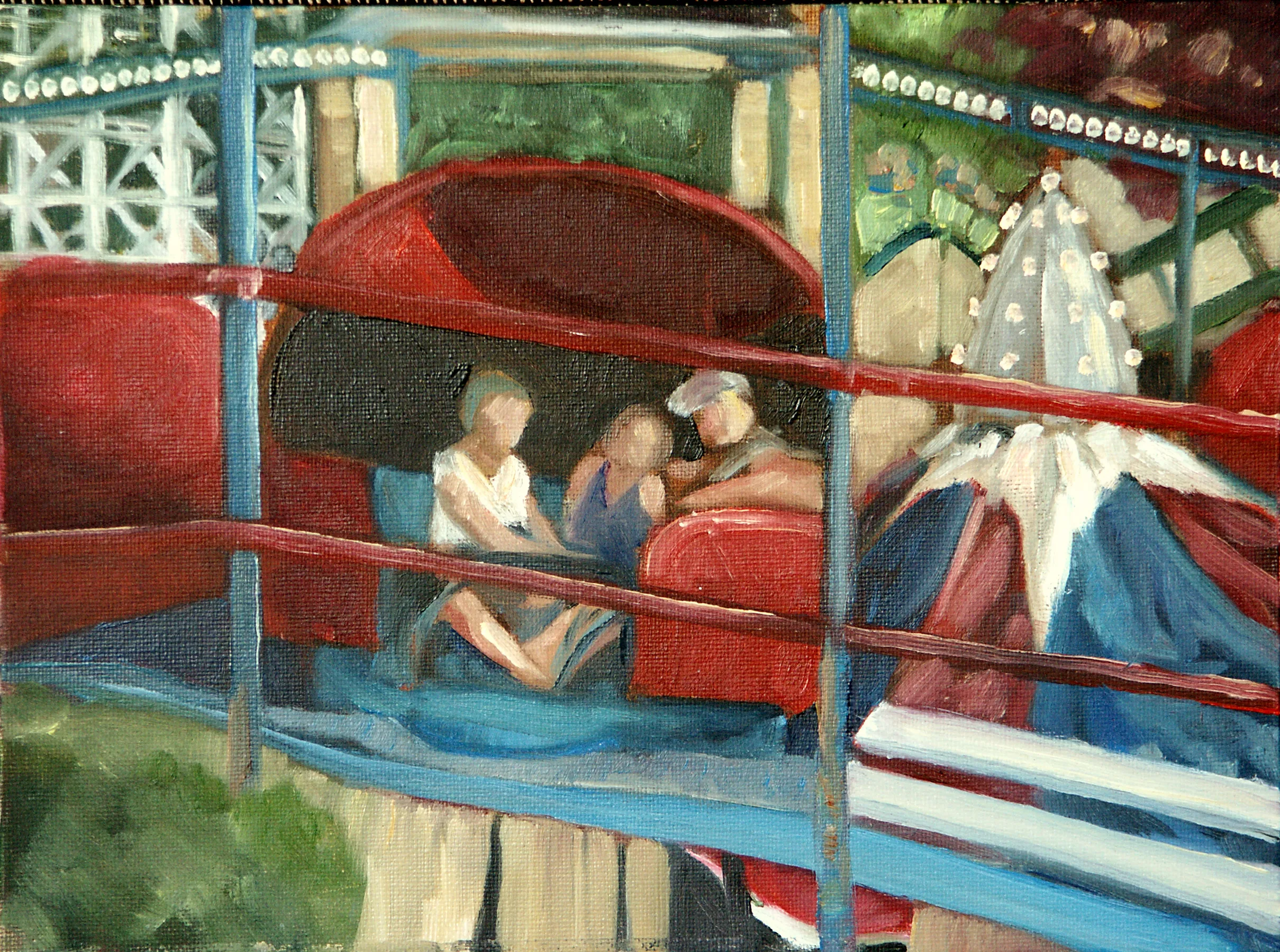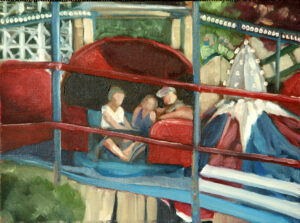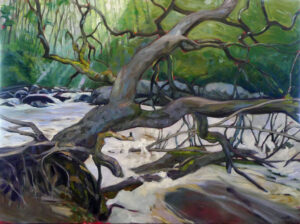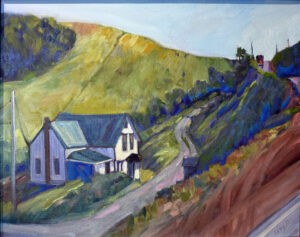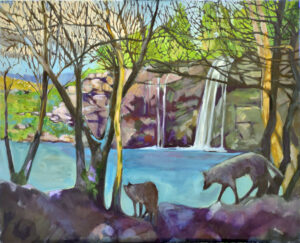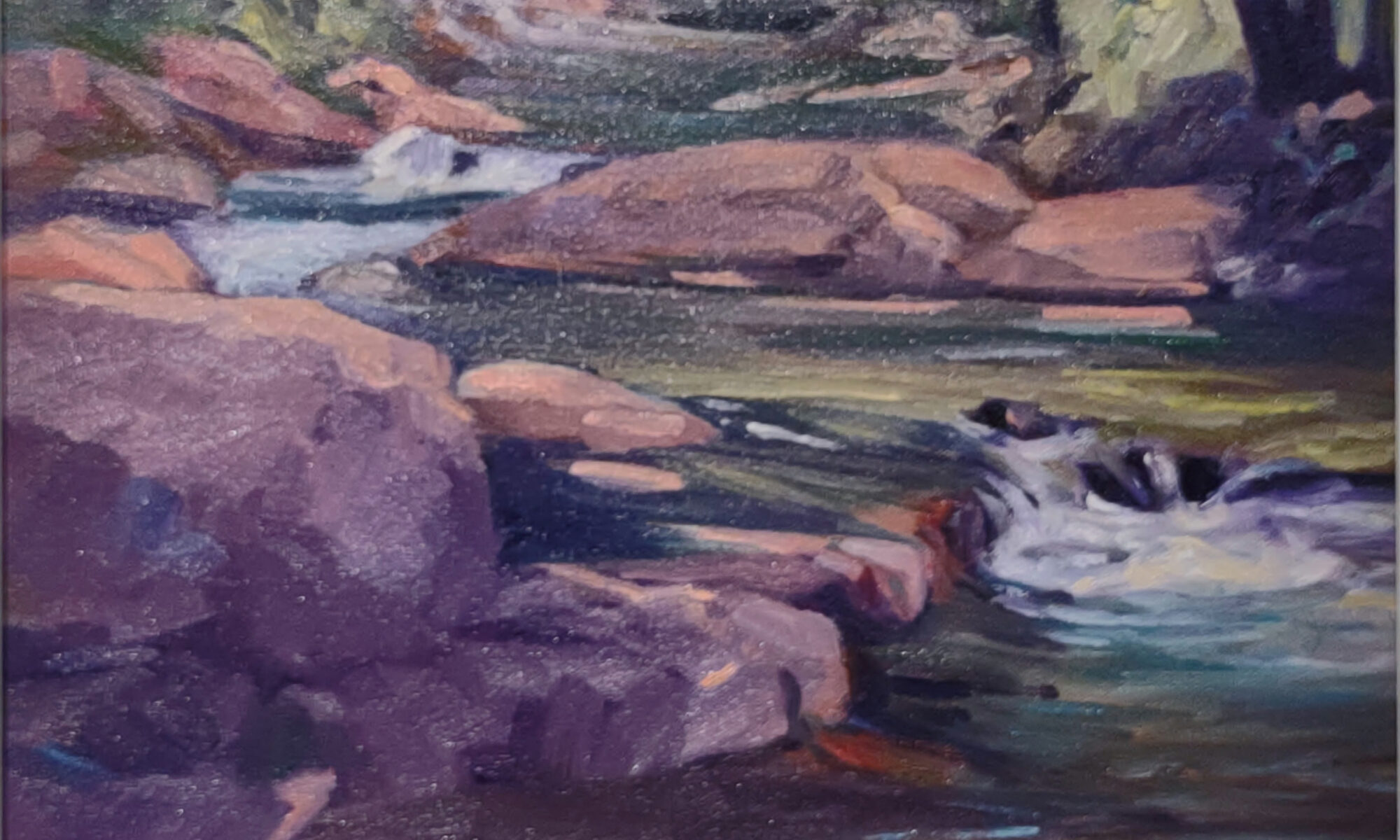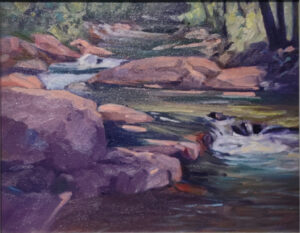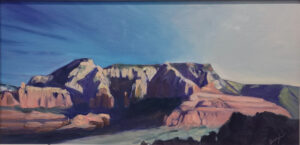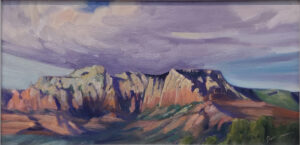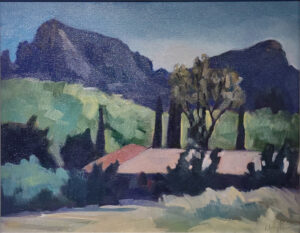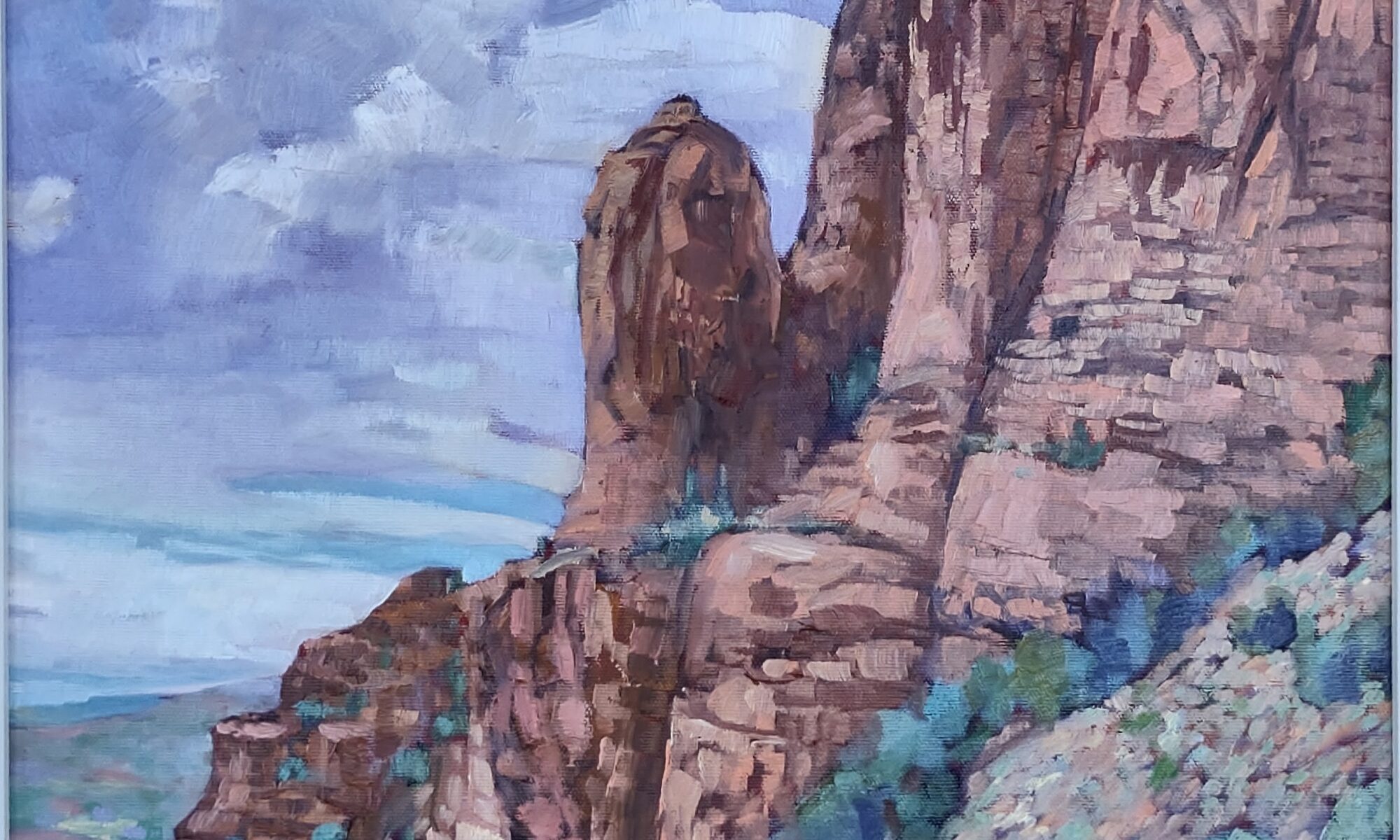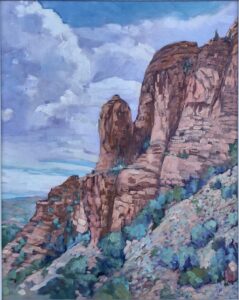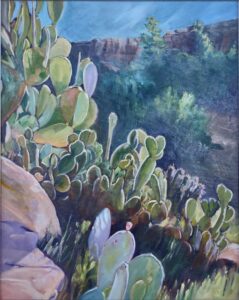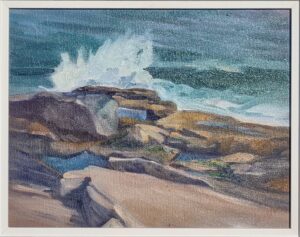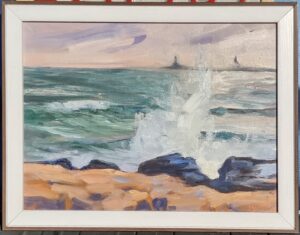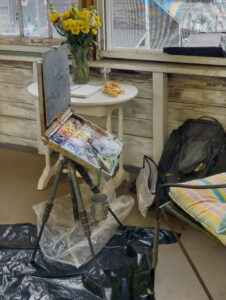
There’s healthy hard work, and then there’s the point at which efficiency rapidly descends into chaos. I must have been at that point on Saturday because, after carefully wrapping frames and paintings at the end of the 19th Annual Sedona Plein Air Festival, I managed to lose my painting pack. Although my paints and pochade box were in my suitcase instead of in the pack, it’s still a big issue. I’ve contacted the Sedona Arts Center and my car rental firm to see if either has it. Until they respond, I wait.
My exhaustion comes not just from my teaching and painting schedule but from the hours spent filming and editing Seven Protocols for Successful Oil Painters. Four are done; the fifth is almost in the bag. My intention was to finish them by the end of this calendar year, but that’s looking impossible.
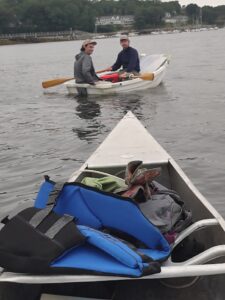
Exhaustion has many harmful effects on the human brain, including cognitive impairment, emotional instability (quit saying that; I’m fine!), reduced attention span, impaired judgment, and a greater risk of accidents. Add to that the stress I alluded to here, and I had set up a perfect storm. However, I still don’t know how I could have missed a full-sized backpack full of painting tools as I was packing to come home.
“When life hands you lemons, make lemonade,” my husband told me. “Tell your reading audience what was in that pack and why you have those things.”
Eric Jacobsen and I were trudging up Beech Hill in the early spring when he noticed I was carrying my gear in a crummy old messenger bag. “You have good backpacks for hiking,” he pointed out. “Why don’t you buy one for painting, which you do every day?” That’s why I bought a Kelty backpack. Although expensive, it’s paid for itself many times over. The exact model I have is no longer made, but this is a close approximation. It’s sized for women, but they make a similar pack for men. If I’m carrying a small pochade box, I can hike long distances without hurting my elderly back.
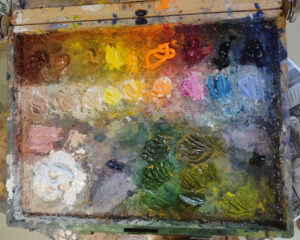
Two years ago, my students got sick of me telling them, “you need good brushes for watercolors, but you can paint with sticks in oils,” and bought me this fantastic set from Rosemary & Co. I added a few Isabey Chungking bristle brushes and three long-handle flats for laying in flat fields of color. Needless to say, I have great sentimental attachment to that brush set.
The only other important thing is my brush-washing canister, but I misplace them so often it hardly signifies.
In the miscellany category, there’s my Bristol-board sketchbook-my dearest friend-and a mechanical pencil from Staples. Eric Jacobsen also recommended this Princeton Catalyst wedge for moving paint around (I swear it only cost me $2 last year). I have a marking stylus given to me by my friend and monitor Jennifer Johnson, and a 4″ plastic putty knife I use as a straight-edge. Then there’s my Red Devil scraper, key to keeping my pochade boxes in their seedy but workable condition. And of course, there are bottle caps I use instead of palette cups, assorted S-hooks and other random hardware, and painting rags.
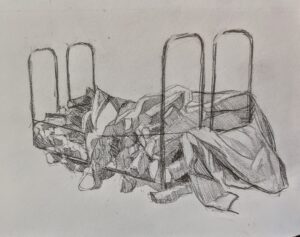
I had pulled my paints out along with my pochade box, but my pack still held my lucky 1-pint Gamsol bottle, which has been refilled endlessly and has traveled around the world with me. There was also a small bottle of stand oil.
Last but certainly not least, there were these inexpensive mesh bags I bought from Amazon last year on the advice of Casey Cheuvront. They keep me organized-can’t you tell?
My 2024 workshops:
- Painting in Paradise: Rockport, ME, July 8-12, 2024.
- Sea & Sky at Schoodic, August 4-9, 2024.
- Find your authentic voice in plein air: Berkshires, August 12-16, 2024.
- Art and Adventure at Sea: Paint Aboard Schooner American Eagle, September 15-19, 2024.
- Immersive In-Person Workshop: Rockport, ME, October 7-11, 2024.

